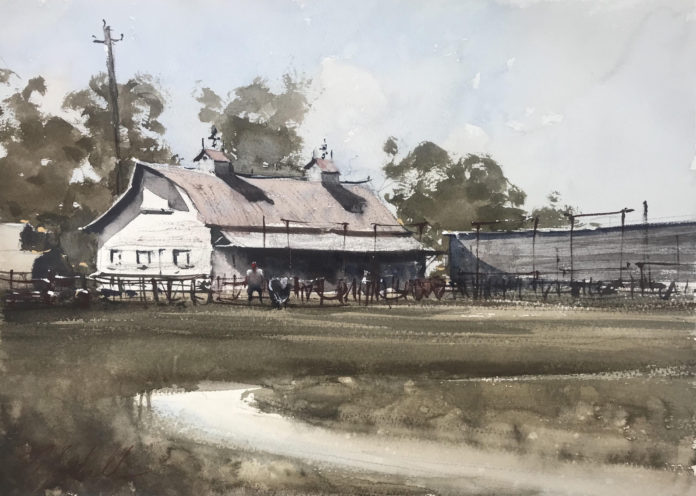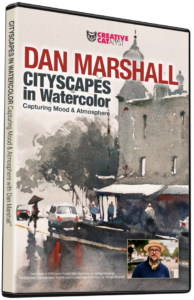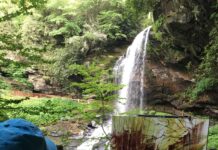On Painting Composition, by Dan Marshall > A strong composition is achieved through intentional design, not a happy accident of random shapes. If we look closely, nature gives us all the information we need. We just have to organize the pieces to create visually pleasing paintings.
Dan Marshall maintains his own studio gallery and private tattoo space, Atelier 71, in Denver, Colorado. He shares more about his process in the video workshop, Cityscapes in Watercolor.
Editing the Landscape for a Better Painting Composition
BY DAN MARSHALL
danmarshallart.com
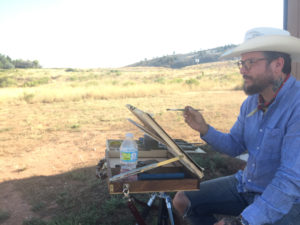
Every now and then, we artists may be blessed with finding a perfect composition in the field. More often than not, however, some amount of editing is required. Many times, even if the scene before us isn’t perfect, we can get caught up trying to duplicate exactly what we see instead of creating our own interpretation of the scene.
Editing allows us to better translate a landscape and present the story we want to tell with our art — and it’s important to think about the changes we want to make right from the start.
On a recent painting trip to Italy, I came upon an interesting canal as I made my way across a narrow bridge in Greve in Chianti. Space on the bridge and busy pedestrian walkway was extremely limited, so it wasn’t a safe place to set up. Instead, I climbed down the rocks onto the bank of the canal and set up there, just in front of and below the bridge.
From this position, I faced a quaint scene with typical Italian buildings, albeit not from a typical viewpoint. The strong lead-in of the retaining wall on the left and the bridge connection in the middle drew me in, but the landscape needed editing to create a strong composition.
For starters, the focal building and bridge (the main subject) were a little far away. Also, the reflection of the creek didn’t continue far enough into the landscape, the light on the buildings was a little flat, and the mass of trees on the left were too prominent.
I could have worked out the compositional changes I wanted to make to the scene with thumbnail sketches and a small study, but instead I did what I call “mental Photoshop.” I studied the scene then started to visualize my painting, composing and rearranging as I saw fit.
If you compare the two photos of the scene to my pencil sketch, you can see how I extended the foreground creek to connect with the middle ground. I then used the creek and wall to lead the viewer’s eye to the bridge. In the finished painting, you can see that I also added a strong directional shadow on the building — aiming right toward the bridge, and a subtle design in the sky that leads toward the buildings. To give the painting a more Tuscan feel, I changed the shape of some of the trees on the left.
Most important, I simplified each major shape, leaving just enough suggested detail to make them interesting to the viewer. To create a unified design, I repeated forms, making zigzag connections. Because I made the sky a “V” shape, I used an inverted “V” shape for the foreground. In the finished work, all the elements fit together like a puzzle to produce a cohesive painting.
Step-by-Step Painting Composition Demonstration: Creating a Unified Design
Step 1
These photos show the view from my easel and include the elements I wanted to reorganize and re-emphasize in my composition.
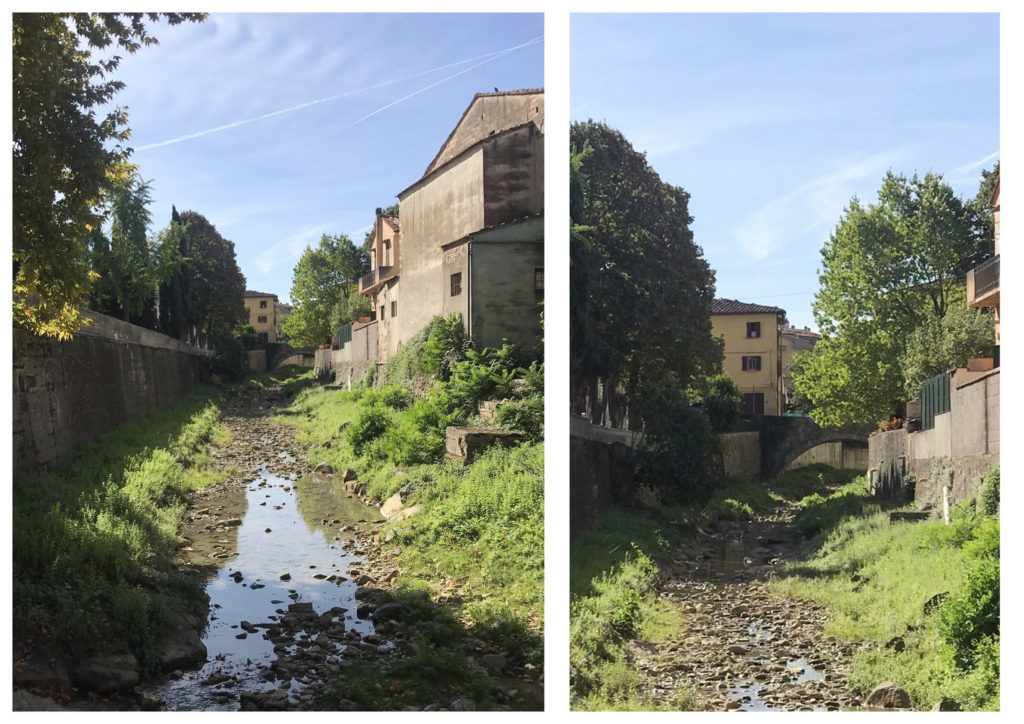
.
Step 2
Starting with a light pencil drawing, I extended the creek so that it connected with the middle ground and helped lead the viewer’s eye to the bridge.
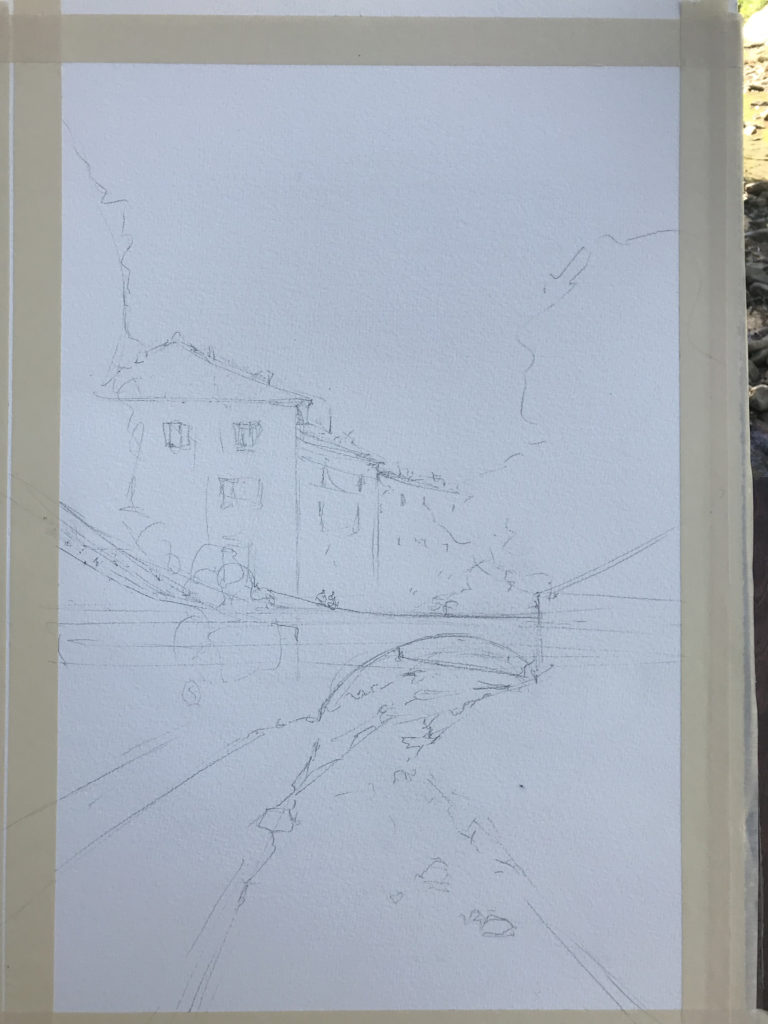
.
Step 3
I also made up a strong diagonal shadow on the building to direct attention to the bridge; and to lead to the building, I devised a subtle diagonal shape in the sky.
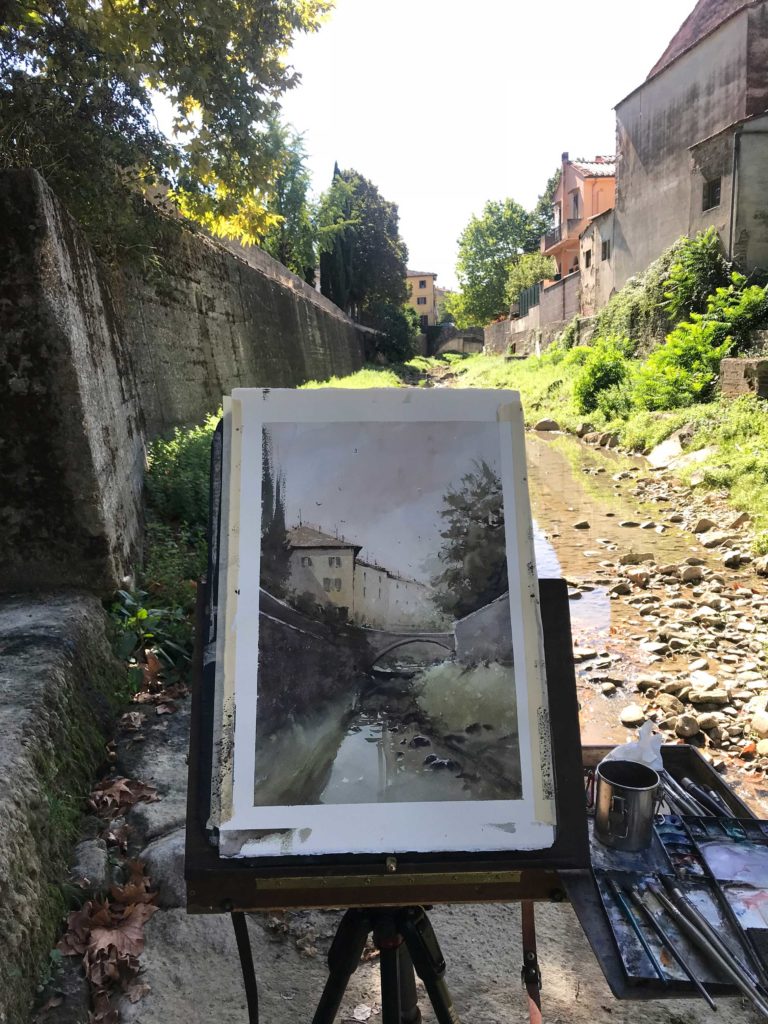
.
Final Step
By simplifying shapes and making connections between them, I created a more unified design than the actual scene presented.
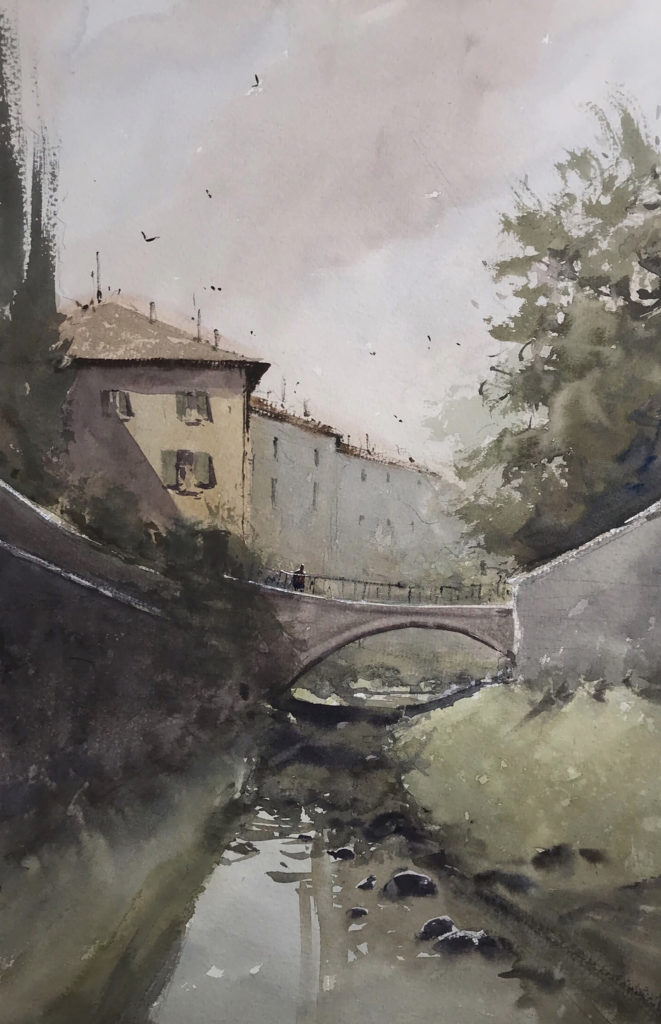
Remember: Dan shares more about his process in the new DVD Cityscapes in Watercolor. You’ll learn these techniques and more:
- Complete a start-to-finish watercolor painting
- Composition lessons to establish a strong center of interest
- How to paint people in motion
- How to paint reflections, buildings, trees, cloudy skies
- Tips to achieve accurate perspective
- Brushwork for painting wet-into-wet, drybrush, calligraphy
- Edge control — when it’s best to use soft or hard edges
- Understand how values say it all!
Browse OutdoorPainter.com for more articles on painting composition.

